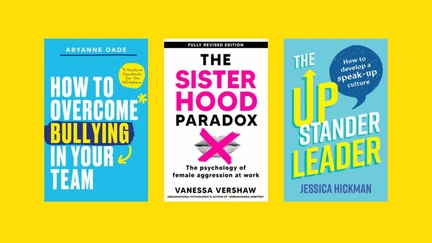Confronting Workplace Bullying

A recent new graduate, excited about beginning her first full time professional role in her chosen career, soon found herself dreading going to work. Within a short time she resigned from the job she had been so happy about getting.
It turned out she was being bullied by a manager who’s role it was to support and mentor her. Instead of being guided and supervised, the new team member was repeatedly told she wasn't doing things well and threatened with being reported to the professional disciplinary board. Being young, with English as a second language, the graduate didn’t understand what it was she was doing wrong or how she could do things better, but she understood that if the manager made good on the threat to report her, her career could be over before it began. Her confidence sunk, going to work increased her nervousness and her stress levels soared.
Fortunately another organisation saw her potential and she is now happy in a role where “people are nice and they take time to explain to me how to do things”.
Sadly, when the schoolyard is left behind, bullying unfortunately isn’t. The 'mean girls' (and boys) make their way into the workplace.
Studies undertaken in Aotearoa suggest at least one in five kaimahi/workers report bullying or harassment annually. And that’s just the reported figure. In 2024 the Human Rights Commission, in conjunction with KPMG, released a report in which they conservatively estimated workplace bullying and harassment cost New Zealand businesses $1.5 billion dollars. This was made up of lost productivity through absenteeism and presenteeism as well as costs associated with mediation.
Employment NZ defines bullying as:
"... repeated and unreasonable behaviour directed towards an employee or a group of employees that can cause physical or mental harm. Bullying can be physical, verbal, psychological or social. It could include victimising, humiliating, intimidating or threatening a person.
A single or occasional incident of insensitive or rude behaviour towards another person is not considered workplace bullying, but it could become more serious and should not be ignored.
Bullying also occurs in many dynamics. For instance:
Downwards from a manager, or senior employee, to an individual or a team;
Upwards from a team or individual to a manager;
Horizontal - where it occurs between individuals or team members;

Although workplace bullying and harassment is generally considered an internal issue it can also be external from a customer to a frontline employee or from an employee to a client.
No matter what form it takes, it is unacceptable. It takes its toll on worker wellbeing and results in lost productivity and reputational damage to the workplace.
As a health and safety issue, employers, no matter the size of the business, have a responsibility to address the issue as they do any other physical health and safety issues.
In this blog we have compiled resources to help employers and employees deal with all aspects of bullying in the workplace.
Get Guidance
The following organisations all provide guidelines, templates and advice for employers and employees.
Watch
How to Eliminate Workplace Bullying and Incivility (TED talk)
HR Professional Forence Bigsby discusses her personal experience with workplace bullying and suggests ways to develop workplace culture to be more empathic and reduce toxic behaviour.
How to start changing an unhealthy work environment (TED talk)
Psychotherapist Glenn Rolfsen talks about what contributes to a toxic work environment and what the significant factors are that determine our working life quality. His approach addresses how to achieve a permanent end to slander and bullying among adults in the workplace.
Learn (LinkedIn courses)
Course, 42m, Beginner
In this course, workplace bullying expert Catherine Mattice Zundel helps HR professionals, leaders, managers, and supervisors put a stop to workplace bullying. She defines the key differences between workplace harassment and bullying, shares how to step in to stop bullying, and explains how to coach those identified as bullies. To create a positive workplace that's free from bullying, Catherine suggests a healthy workplace corporate policy, ongoing training, and the use of performance management. She also highlights the role leadership plays in being transparent about supporting a healthy workplace.
Preventing Harassment in the Workplace
Course 43m Intermediate
Harassment is still pervasive in many workplaces—despite the fact that nearly every organization has an anti-harassment policy in place and offers related training. How can HR leaders—and leaders in general—proactively create safe and healthy workplaces? What are the standards required? In this course, Catherine Mattice explains how to approach this critical topic so that real, positive change can occur at your organization.

Read
- Report: Counting the cost: Estimating the economic cost of workplace bullying and harassment on NZ employees. Human Rights Commission, 2024
- Workplace bullying: The silent killer of professional growth by Naphtali Hoff, 2025
- How to Tell If a Prospective Workplace Is Toxic by Mita Mallick, 2024
- The Sisterhood Paradox: The psychology of female aggression at work by Vanessa Vershaw, 2025
- Are you being bullied at work? : how to recover from, prevent and cope with a toxic workplace by Aryanne Oade, 2024
- How to Overcome Bullying in Your Team : A Practical Handbook for the Workplace by Aryanne Oade, 2024
- The upstander leader : how to develop a speak-up culture by Jessica Hickman, 2022
- Workplace bullying : a costly business phenomenon by Andrea Needham, Revised edition. 2019